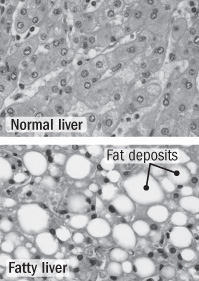
Gulpwater® every single day. Simple, Critical and Guaranteed.
Here is more insight why gulping water is ALOT better for you than drinking soda made with sugar and fructose...
From:http://www.health.harvard.edu/newsletters/Harvard_Heart_Letter/2011/September/abundance-of-fructose-not-good-for-the-liver-heart
Another reason to avoid foods made with a lot of sugar.The human body handles glucose and fructose — the most abundant sugars in our diet — in different ways. Virtually every cell in the body can break down glucose for energy. About the only ones that can handle fructose are liver cells. What the liver does with fructose, especially when there is too much in the diet, has potentially dangerous consequences for the liver, the arteries, and the heart.
Fructose, also called fruit sugar, was once a minor part of our diet. In the early 1900s, the average American took in about 15 grams of fructose a day (about half an ounce), most of it from eating fruits and vegetables. Today we average four or five times that amount, almost all of it from the refined sugars used to make breakfast cereals, pastries, sodas, fruit drinks, and other sweet foods and beverages.
Refined sugar, called sucrose, is half glucose and half fructose. High-fructose corn syrup is about 55% fructose and 45% glucose.
From fructose to fat
The entry of fructose into the liver kicks off a series of complex chemical transformations. (You can see a diagram of these at health.harvard.edu/172.) One remarkable change is that the liver uses fructose, a carbohydrate, to create fat. This process is called lipogenesis. Give the liver enough fructose, and tiny fat droplets begin to accumulate in liver cells (see figure). This buildup is called nonalcoholic fatty liver disease, because it looks just like what happens in the livers of people who drink too much alcohol.Virtually unknown before 1980, nonalcoholic fatty liver disease now affects up to 30% of adults in the United States and other developed countries, and between 70% and 90% of those who are obese or who have diabetes.
Early on, nonalcoholic fatty liver disease is reversible. At some point, though, the liver can become inflamed. This can cause the low-grade damage known as nonalcoholic steatohepatitis (steato meaning fat and hepatitis meaning liver inflammation). If the inflammation becomes severe, it can lead to cirrhosis — an accumulation of scar tissue and the subsequent degeneration of liver function.
Beyond the liver
The breakdown of fructose in the liver does more than lead to the buildup of fat. It also:-
elevates triglycerides
-
increases harmful LDL (so-called bad cholesterol)
-
promotes the buildup of fat around organs (visceral fat)
-
increases blood pressure
-
makes tissues insulin-resistant, a precursor to diabetes
-
increases the production of free radicals, energetic compounds that can damage DNA and cells.
---------------------------------
Gulpwater® every single day. Simple, Critical and Guaranteed.
Gulpwater® Hydrate, Educate, Donate.

Hydration Education Foundation is organized as a 501(c) 3 nonprofit tax-exempt organization to help prevent childhood obesity, diabetes, dehydration and dental disease by replacing drinking fructose and sugar drinks with gulping clean water. We are an IRS approved Public Charity. Please consider making a tax-deductible contribution to support us helping kids.
To visit Gulpwater® online: www.hydrationeducation.org
To contribute - please go to: www.hydrationeducation.org/donate.html
To see our Gulpwater®twitter - please tweet to: @Gulpwater
To email Gulpwater®: gulpwater@aol.com
http://justcoz.org/Gulpwater and donate a tweet today.